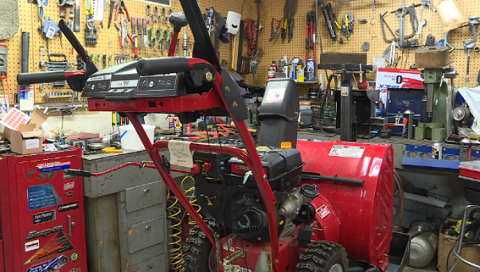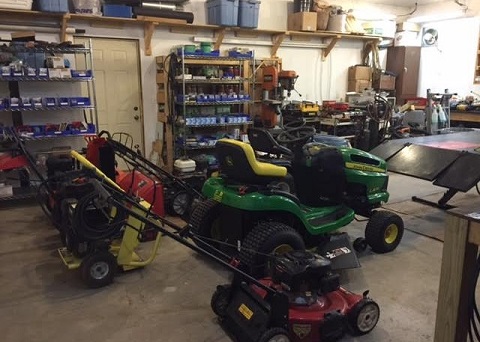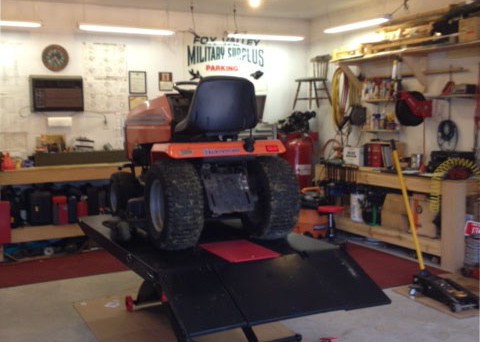50 Tools Every OPE Dealer's Service Department Needs
by Black Ink Team
Outdoor power equipment customers, especially professional landscapers, occasionally need their equipment to be repaired. This creates an opportunity for dealers to make themselves more useful to their customers, by having quality service departmets and providing replacement parts.
The need for them to exist is simple to understand, but small engine repair shops are not themselves simple. Here are just 50 of the tools that every outdoor power equipment dealer's service department needs to operate effectively.
Air Compressors - Useful for pumping up tires and clearing small debris
Ammeters - Instruments that measure electrical current through a circuit
Aprons - Protect the body and provide carrying space
Battery Charger - Enable technicians to charge up batteries in less time
Blowtorches - Stuck bolts can be melted to loosen them
Brushes - Periodically clearing debris is essential to some repairs
Buffers - Remove the time needed for manual scrubbing
Chisels - When struck by a hammer, can exert lots of force
Clamps - Allow workers to keep components still while working on them
Compression Gauges - Test the gaseous pressure inside a closed system, for instance a tire

Gloves - Protect the hands and provide additional grip
Cylinder Hone - Eliminates glaze deposits on cylinder walls
Degreaser - Cleans parts and lubricates them
Drills - Faster than using hand tools
Ear Muffs - Protect the ears - however technicians should adopt hand signals
Extension Cords - Extend the reach of tools that need to be plugged into an outlet
Extractors - Needed to remove 'stripped' screws and nuts
Fans - Make technicians more comfortable and dispel fumes
Files - Convenient for widening holes and smoothing nubs
Fire Extinguishers - Required by code and potentially life-saving

Flashlights - Reduces guesswork
Goggles - Protect the eyes and make it easier to see
Grinders - Faster than using hand tools
Hammers - Grant the ability to exert massive amounts of force
Jacks - Hold heavy components up so technicians can see under them
Knifes - Great for cutting tubes and prying seams
Magnets - Capable of collecting small metal bits and magnetizing hand tools
Magnifying Lenses - Give technicians a closer look
Masks - Protect the lungs/retinas
Mats - Standing on cement is uncomfortable and dropped tools break less

Needle And Seat Tools - Simplest way to replace seats inside carburetors
Oil Pans - Responsible disposable of grease is required by law, plus can catch parts
Parts Cabinet - Promote organization
Pegboard - Grant customizable access to tools
Pens And Paper - For technicians to jot down notes and make lists with
Pliers - Provide enhanced grip and force
Pullers - Only way to remove some parts without damaging them
Ratchet And Socket Sets - Best way to remove/tighten standardized nuts and bolts
Screwdrivers - Most sensible way to remove/tighten screws
Sharpeners - Improve both the customer's equipment and the technician's tools

Soldering Irons - Necessary for fixing/replacing electrical components
Stools - While sitting technicians have steadier hands and can work longer
Tire Changer - Quickest way to replace a tire on a rim
Ultrasonic Cleaner - Most efficient way to remove debris particles from important parts
Vacuum - Handy for maintaining a clean work environment
Vise-Grips - Lets technicians hold things without spending energy
Voltmeters - Instruments that measure electrical potential within a circuit
Welding Torches - For when nuts/bolts/screws aren't an option
Wire Strippers - Most accurate way of removing non-conductive sheaths
Wrenches - Remove nuts and bolts with the added benefit of not damaging them
